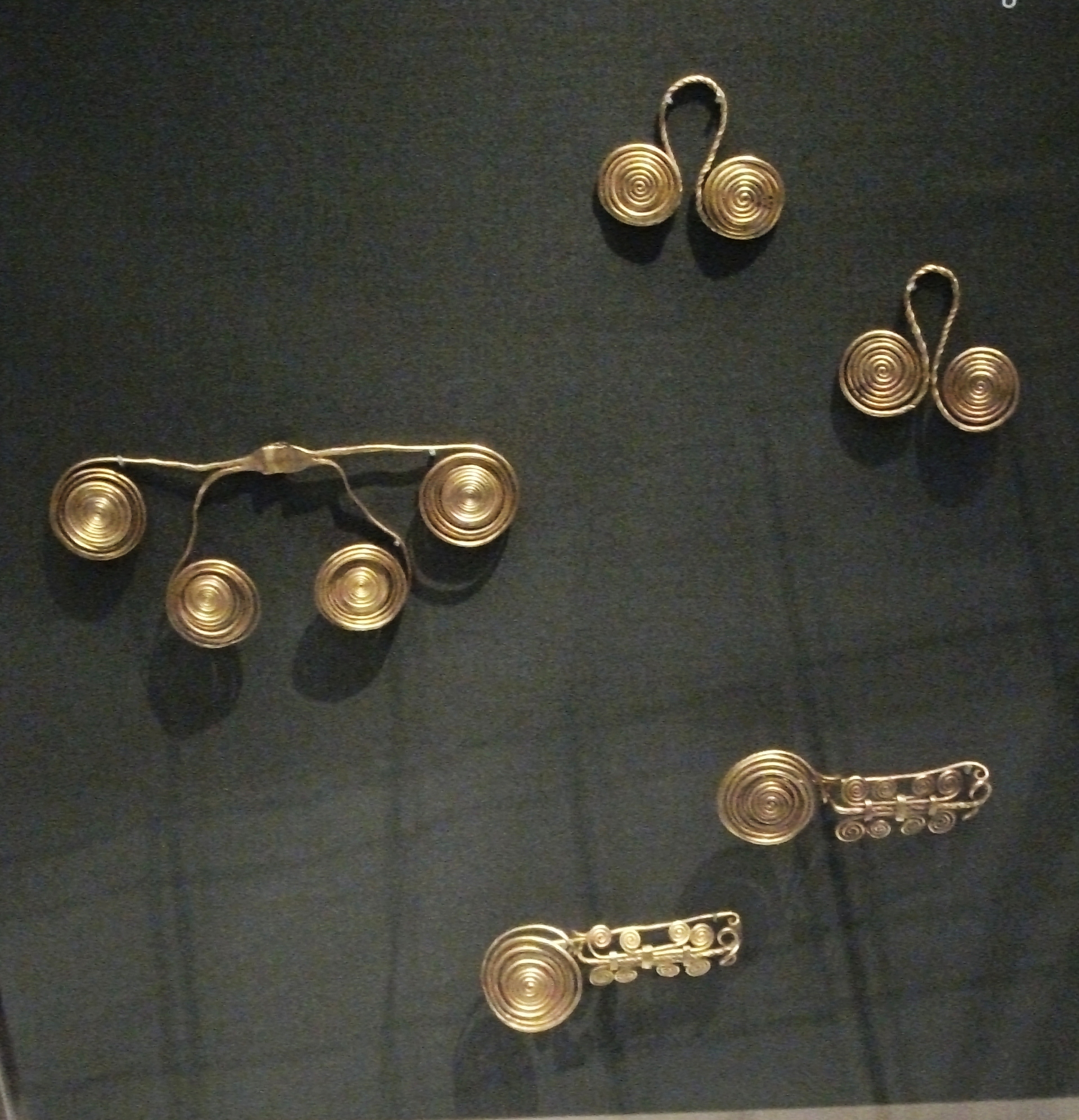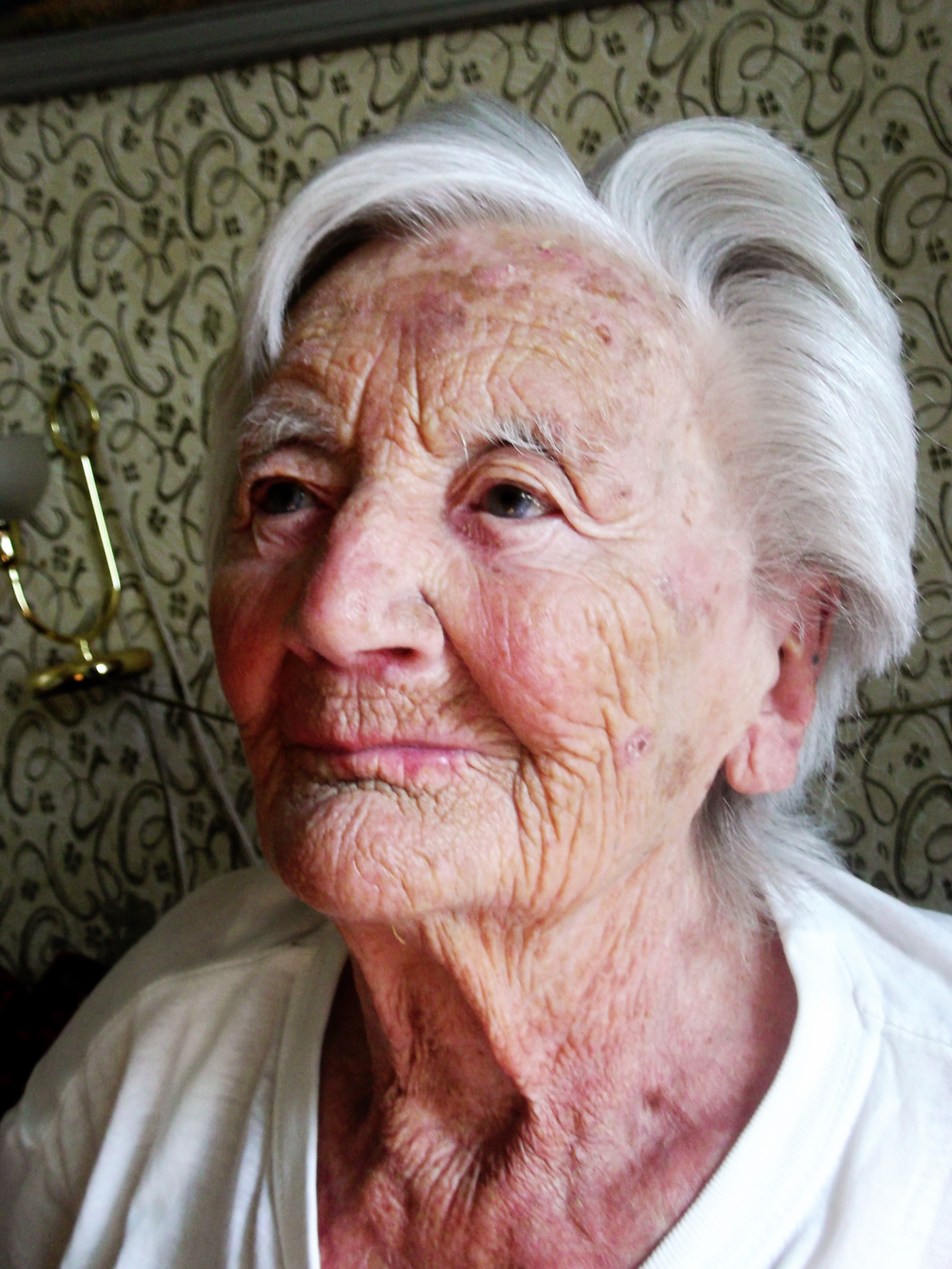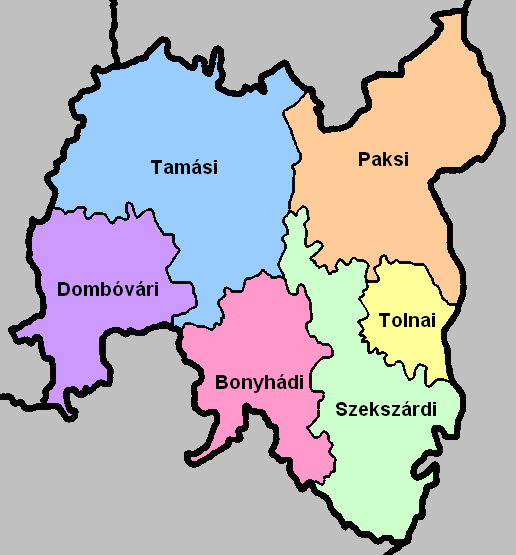|
Dunaföldvár
Dunaföldvár is a town in Tolna County, Hungary. Its residents are Hungarian people, Hungarians, with minority of Serbs. History A Bronze Age gold hoard of jewellery was found between Paks and Dunaföldvár on the banks of the Danube in the nineteenth century. The treasure is now in the collections of the British Museum. Dunaföldvár was an important settlement at the time of the Hungarian conquest of the Carpathian Basin, Hungarian conquest, and experienced its golden age during the 14th and 15th centuries. It was first mentioned in the work of the Turkish chronicler Sinan Chaus, who described the history of the 1543 expedition. However, the castle was destroyed in the autumn of 1686 after it was set ablaze by Turkish troops. In 1703, the legendary Kuruc general, General János Bottyán, occupied the castle, which became famous as the bridgehead of the Transdanubian campaign. The castle was restored at the beginning of the 19th century, and in 1974 restoration was conclude ... [...More Info...] [...Related Items...] OR: [Wikipedia] [Google] [Baidu] |
Piroska Oszoli
Piroska Oszoli (21 January 1919 – 22 March 2017) was a Hungarian painter, is known as "The lover of the Danube and the beautiness". She worked especially as applied to En plein air, plein air Landscape art, landscape painting. Life Piroska Oszoli (née Névery) was born in Dunaföldvár, Hungary in a Roman Catholic Hungarian nobility, baron family on 21 January 1919. After finishing her studies, she taught literature and history in Budapest. Her master as an amateur artist was the note Transylvanian painter ''Ferenc Doór'' (1918–2015). From 1947, after having returned in her native village to teach painting for schoolchildren, she completed her art studies as well. Her husband was István Oszoli, a high school biology and chemistry teacher from 1949 until his death in 2003. They have two sons, István (b. 1950) and András (b. 1953). After teaching she became a pensioner, and started her painting as an individual artist. She worked all around her village and neighborhood, ... [...More Info...] [...Related Items...] OR: [Wikipedia] [Google] [Baidu] |
Tolna County
Tolna (, ; ) is an administrative county (Comitatus (Kingdom of Hungary), comitatus or vármegye) in present-day Hungary as it was in the former Kingdom of Hungary. It lies in central Hungary, on the west bank of the river Danube. It shares borders with the Hungarian counties of Somogy County, Somogy, Fejér, Bács-Kiskun, and Baranya (county), Baranya. The capital of Tolna county is Szekszárd. Its area is 3,703 km2. History Tolna (in Latin: ''comitatus Tolnensis'') was also the name of a historic administrative county (Comitatus (Kingdom of Hungary), comitatus) of the Kingdom of Hungary. Its territory, which was about the same as that of the present Tolna county, is now in central Hungary. The capital of the county was Szekszárd. Demographics In 2015, Tolna had a population of 225,936 and the population density was . Ethnicity Besides the Hungarian majority, the main minorities are the Germans (approx. 10,000) and Roma (8,500). Total population (2011 census): 230,3 ... [...More Info...] [...Related Items...] OR: [Wikipedia] [Google] [Baidu] |
Paks
Paks is a small town in Tolna (county), Tolna county, in the south of Hungary, on the right bank of the Danube River, 100 km south of Budapest. Paks as a former agricultural settlement is now the home of the only Hungarian Paks Nuclear Power Plant, nuclear power plant, which provides about 40% of the country's electricity consumption. History The settlement was already inhabited in ancient times. It has played a role in the Ottoman Empire times and during Rákóczi's War of Independence. The Calvinist and the Lutheran churches were built in 1775 and 1884 respectively. In the 19th century, several mansions were built in the center of the old town, such as those in Szent István Tér, the main square of the town. The Catholic three-isled, basilica style Sacred Heart church was consecrated in 1901. There is a tablet in the wall of the baroque Szeniczey mansion to commemorate Ferenc Deák (politician), Ferenc Deák, 'the Sage of the Country'. The Town Museum is housed in t ... [...More Info...] [...Related Items...] OR: [Wikipedia] [Google] [Baidu] |
Zsujta
Zsujta is a village in Borsod-Abaúj-Zemplén county, Hungary. A large Bronze Age hoard of weapons and cart fittings (one in the shape of a duck), was discovered at the village in the late 19th century. The hoard is now in the collections of the British Museum, London. History Zsujta is a small border settlement in the Hernád Valley. The area of the village and its surroundings has been inhabited since ancient times, as evidenced by the rich and valuable Bronze Age findings discovered in the 1800s, now located in the British Museum. The first mention of our Árpád-era settlement is found in a document dated 1219, in the Váradi Regestrum charter, under the name Sucta. According to the charter, a man named Reynold from Zsujta accused the son of a Gönc resident of murder. In 1295, the village was referred to as Sugta or Sugtha, and in the early 14th century, it was recorded as Sugkta. In the early 14th century, it was noted as the village of János, the castle captain of Gö ... [...More Info...] [...Related Items...] OR: [Wikipedia] [Google] [Baidu] |
British Museum
The British Museum is a Museum, public museum dedicated to human history, art and culture located in the Bloomsbury area of London. Its permanent collection of eight million works is the largest in the world. It documents the story of human culture from its beginnings to the present.Among the national museums in London, sculpture and decorative art, decorative and applied art are in the Victoria and Albert Museum; the British Museum houses earlier art, non-Western art, prints and drawings. The National Gallery holds the national collection of Western European art to about 1900, while art of the 20th century on is at Tate Modern. Tate Britain holds British Art from 1500 onwards. Books, manuscripts and many works on paper are in the British Library. There are significant overlaps between the coverage of the various collections. Established in 1753, the British Museum was the first public national museum. In 2023, the museum received 5,820,860 visitors, 42% more than the previous y ... [...More Info...] [...Related Items...] OR: [Wikipedia] [Google] [Baidu] |
Danube
The Danube ( ; see also #Names and etymology, other names) is the List of rivers of Europe#Longest rivers, second-longest river in Europe, after the Volga in Russia. It flows through Central and Southeastern Europe, from the Black Forest south into the Black Sea. A large and historically important river, it was once a frontier of the Roman Empire. In the 21st century, it connects ten European countries, running through their territories or marking a border. Originating in Germany, the Danube flows southeast for , passing through or bordering Austria, Slovakia, Hungary, Croatia, Serbia, Romania, Bulgaria, Moldova, and Ukraine. Among the many List of cities and towns on the river Danube, cities on the river are four national capitals: Vienna, Bratislava, Budapest, and Belgrade. Its drainage basin amounts to and extends into nine more countries. The Danube's longest headstream, the Breg (river), Breg, rises in Furtwangen im Schwarzwald, while the river carries its name from its ... [...More Info...] [...Related Items...] OR: [Wikipedia] [Google] [Baidu] |
Countries Of The World
The following is a list providing an overview of sovereign states around the world with information on their status and recognition of their sovereignty. The 205 listed states can be divided into three categories based on membership within the United Nations System: 193 member states of the United Nations, UN member states, two United Nations General Assembly observers#Current non-member observers, UN General Assembly non-member observer states, and ten other states. The ''sovereignty dispute'' column indicates states having undisputed sovereignty (188 states, of which there are 187 UN member states and one UN General Assembly non-member observer state), states having disputed sovereignty (15 states, of which there are six UN member states, one UN General Assembly non-member observer state, and eight de facto states), and states having a political status of the Cook Islands and Niue, special political status (two states, both in associated state, free association with New ... [...More Info...] [...Related Items...] OR: [Wikipedia] [Google] [Baidu] |
Nondenominational Christianity
Non-denominational Christianity (or nondenominational Christianity) consists of churches, and individual Christians, which typically distance themselves from the confessionalism or creedalism of other Christian communities by not formally aligning with a specific Christian denomination. In North America, nondenominational Christianity arose in the 18th century through the Stone-Campbell Restoration Movement, with followers organizing themselves simply as " Christians" and " Disciples of Christ". The nondenominational movement saw expansion during the 20th century Jesus movement era, which popularized contemporary Christian music and Christian media within global pop culture. Many nondenominational churches adhere to congregationalist polity, while others are governed by elders. Some nondenominational churches are independent, while others cooperate in loose associations such as the Churches of Christ; in other cases, nondenominational churches are founded by individual ... [...More Info...] [...Related Items...] OR: [Wikipedia] [Google] [Baidu] |
Twin Towns And Sister Cities
A sister city or a twin town relationship is a form of legal or social agreement between two geographically and politically distinct localities for the purpose of promoting cultural and commercial ties. While there are early examples of international links between municipalities akin to what are known as sister cities or twin towns today dating back to the 9th century, the modern concept was first established and adopted worldwide during World War II. Origins of the modern concept Throughout history, many cities have participated in various cultural exchanges and similar activities that might resemble a sister-city or twin-city relationship, but the first officially documented case of such a relationship was a signed agreement between the leaders of the cities of Toledo, Ohio and Toledo, Spain in 1931. However, the modern concept of town twinning appeared during the Second World War. More specifically, it was inspired by the bombing of Coventry on 14 November 1940, known as t ... [...More Info...] [...Related Items...] OR: [Wikipedia] [Google] [Baidu] |
Bronze Age JewelleryDSCF6607
Bronze is an alloy consisting primarily of copper, commonly with about 12–12.5% tin and often with the addition of other metals (including aluminium, manganese, nickel, or zinc) and sometimes non-metals (such as phosphorus) or metalloids (such as arsenic or silicon). These additions produce a range of alloys some of which are harder than copper alone or have other useful properties, such as strength, ductility, or machinability. The archaeological period during which bronze was the hardest metal in widespread use is known as the Bronze Age. The beginning of the Bronze Age in western Eurasia is conventionally dated to the mid-4th millennium BCE (~3500 BCE), and to the early 2nd millennium BCE in China; elsewhere it gradually spread across regions. The Bronze Age was followed by the Iron Age, which started about 1300 BCE and reaching most of Eurasia by about 500 BCE, although bronze continued to be much more widely used than it is in modern times. Because historical artworks we ... [...More Info...] [...Related Items...] OR: [Wikipedia] [Google] [Baidu] |
Ossona
Ossona (Milanese: ) is a ''comune'' (municipality) in the Metropolitan City of Milan in the Italian region Lombardy, located about west of Milan. As of 31 December 2004, it had a population of 3,928 and an area of .All demographics and other statistics: Italian statistical institute Istat. The municipality of Ossona contains the ''frazione'' (subdivision) Asmonte. Ossona borders the following municipalities: Casorezzo, Inveruno, Arluno, Mesero Mesero (; ) is a ''comune'' (municipality) in the Metropolitan City of Milan in the Italian region Lombardy, located about west of Milan. Mesero borders the following municipalities: Inveruno Inveruno ( or ''Invrugn'' is a ''comune'' (municip ..., Marcallo con Casone, Santo Stefano Ticino. Demographic evolution Colors= id:lightgrey value:gray(0.9) id:darkgrey value:gray(0.8) id:sfondo value:rgb(1,1,1) id:barra value:rgb(0.6,0.7,0.8) ImageSize = width:455 height:303 PlotArea = left:50 bottom:50 top:30 right:30 DateF ... [...More Info...] [...Related Items...] OR: [Wikipedia] [Google] [Baidu] |
Weikersheim
Weikersheim is a town in the Main-Tauber district of Baden-Württemberg, Germany. History Town rights were granted to Weikersheim in 1313. As one of the seats of the House of Hohenlohe, until 1756 Weikersheim's town center was dominated by Weikersheim Castle, residence of the Hohenlohe-Weikersheim line. During the process of German mediatization from 1806 to 1809, Weikersheim was awarded to the Kingdom of Württemberg, whose government assigned the city to . In 1938, the Oberamt was reorganized as , under whose jurisdiction Weikersheim remained. From 1 January 1972 to 1 January 1975, Weikersheim incorporated eight municipalities. In that time, , and as a result Weikersheim was assigned to the newly created Main-Tauber district. In 2000, the old town and palace were placed under protection as cultural monuments. Geography The township ('' Stadt'') of Weikersheim covers of the Main-Tauber district of Baden-Württemberg, a state of the Federal Republic of Germany. Weikersheim ... [...More Info...] [...Related Items...] OR: [Wikipedia] [Google] [Baidu] |






